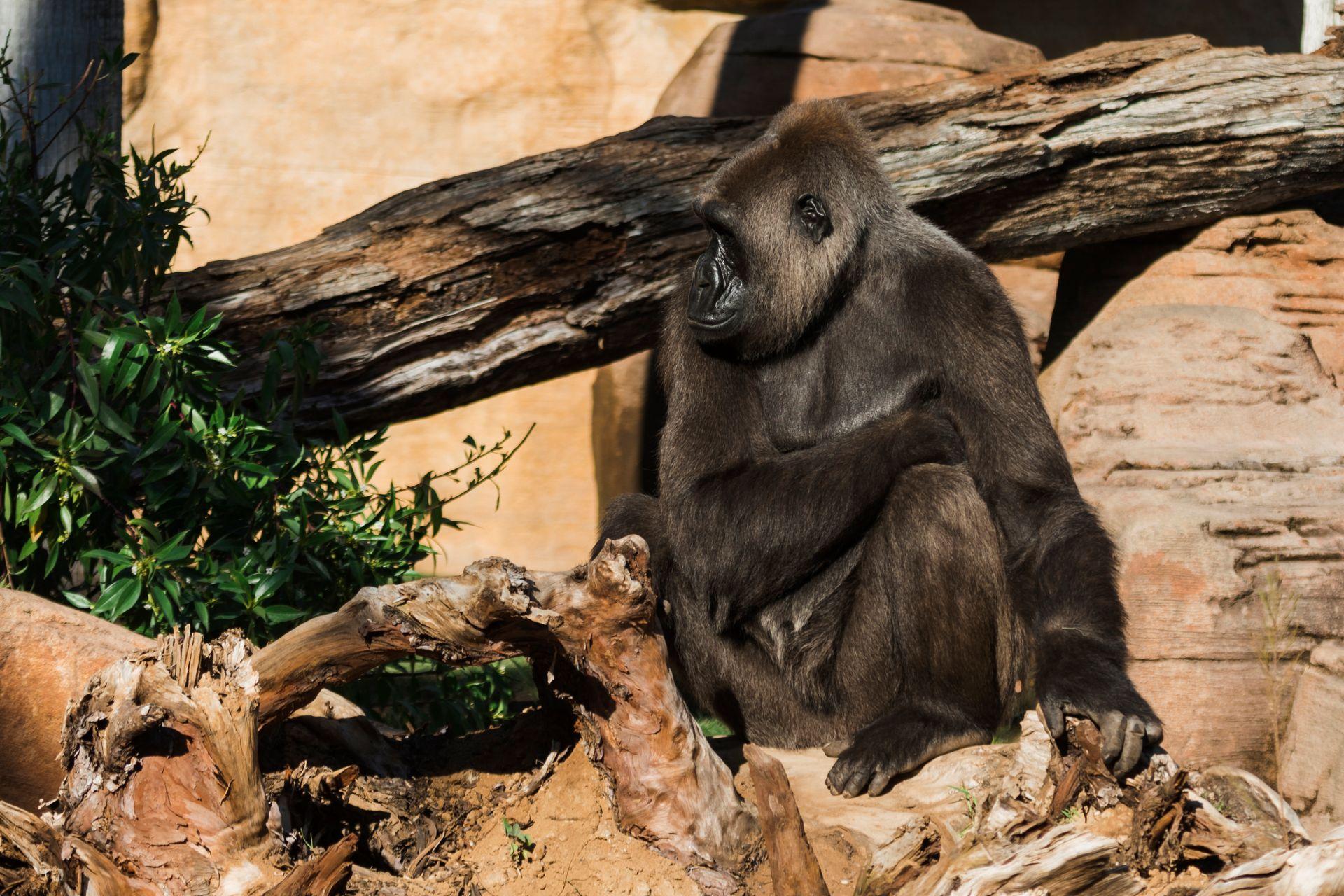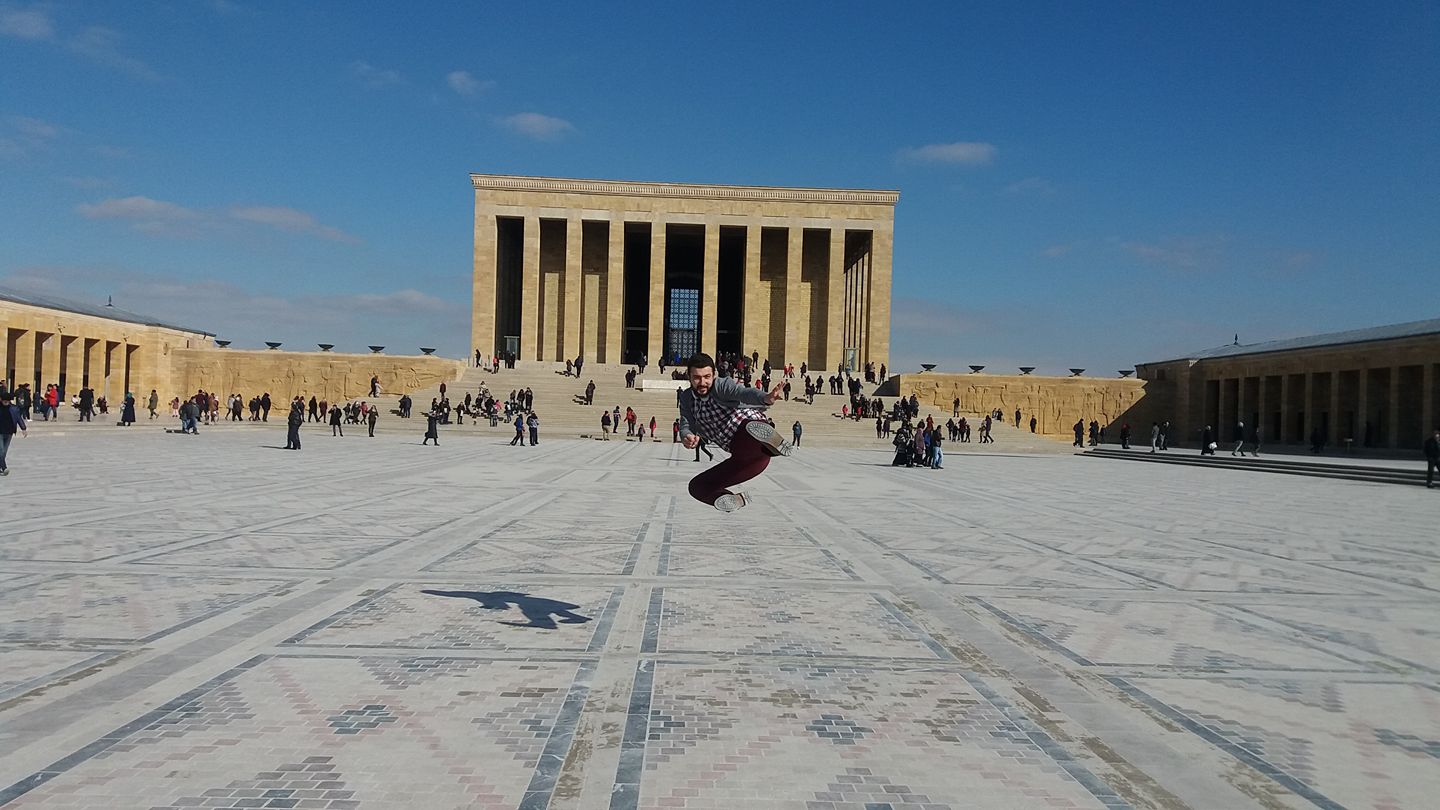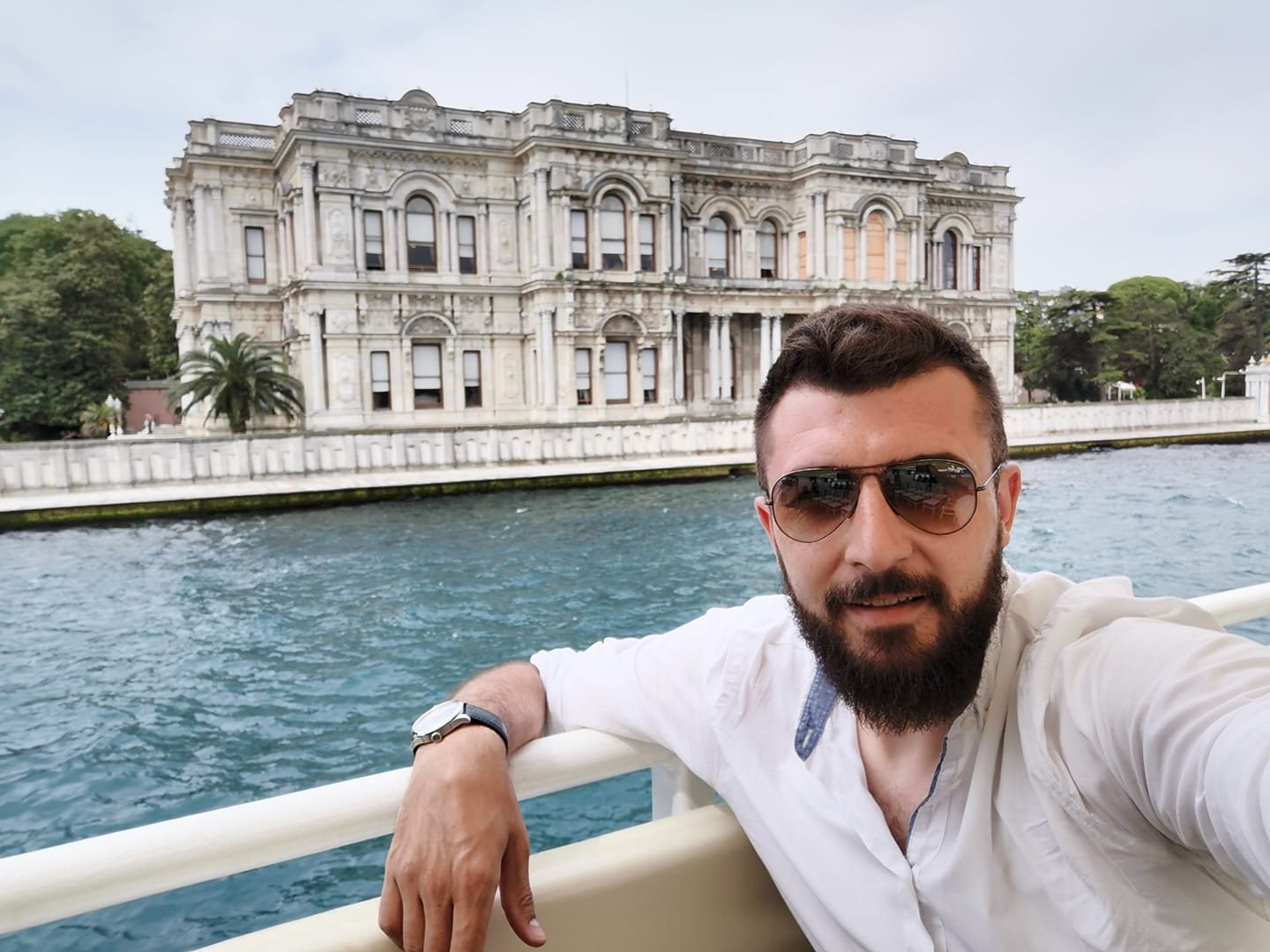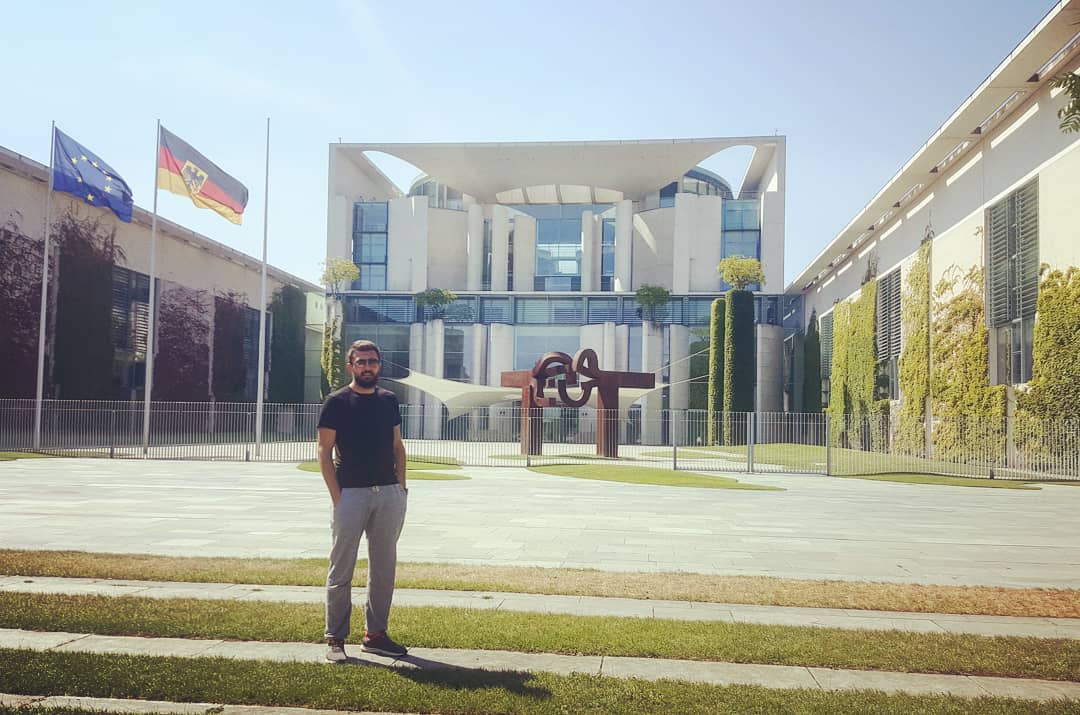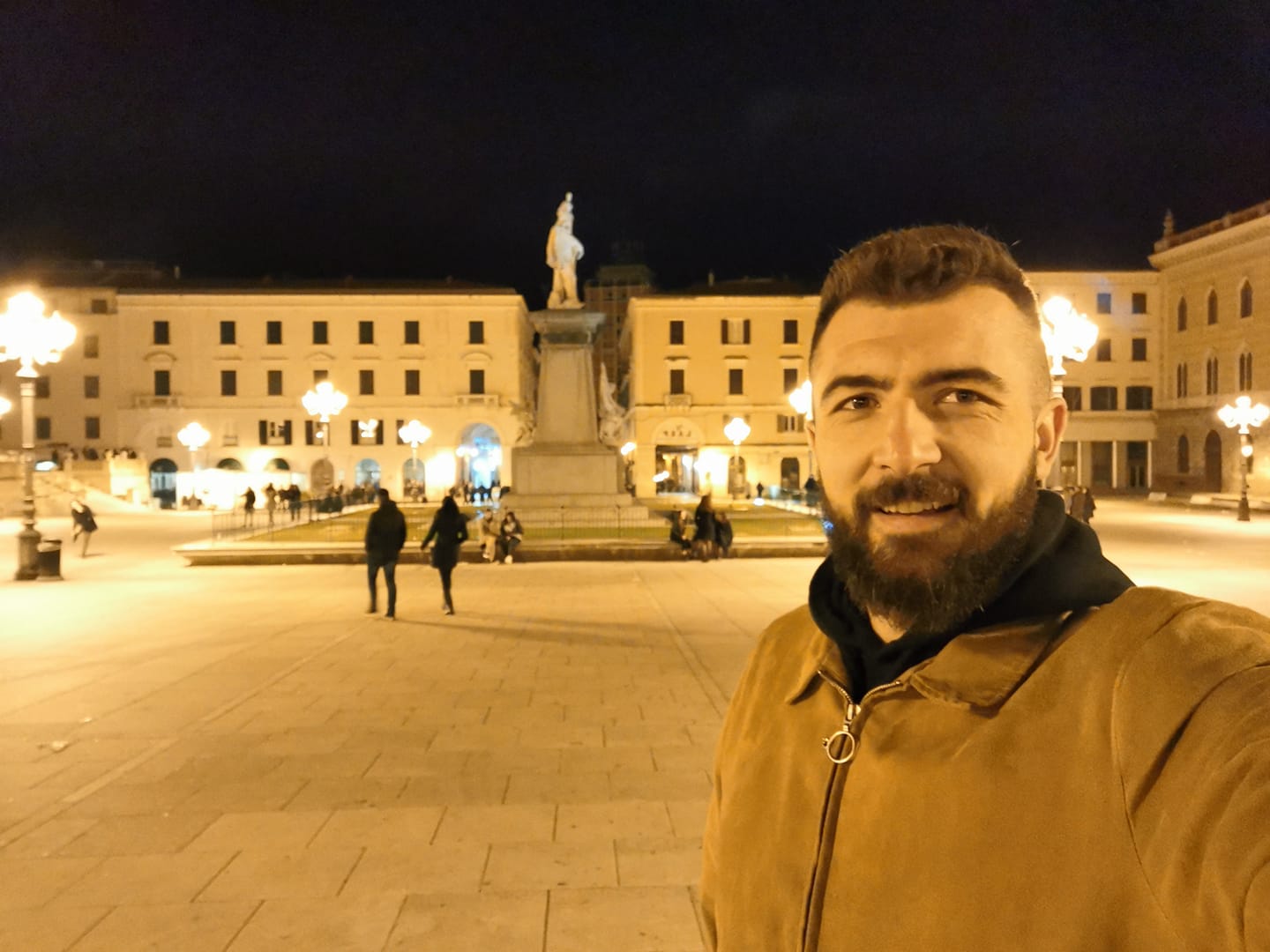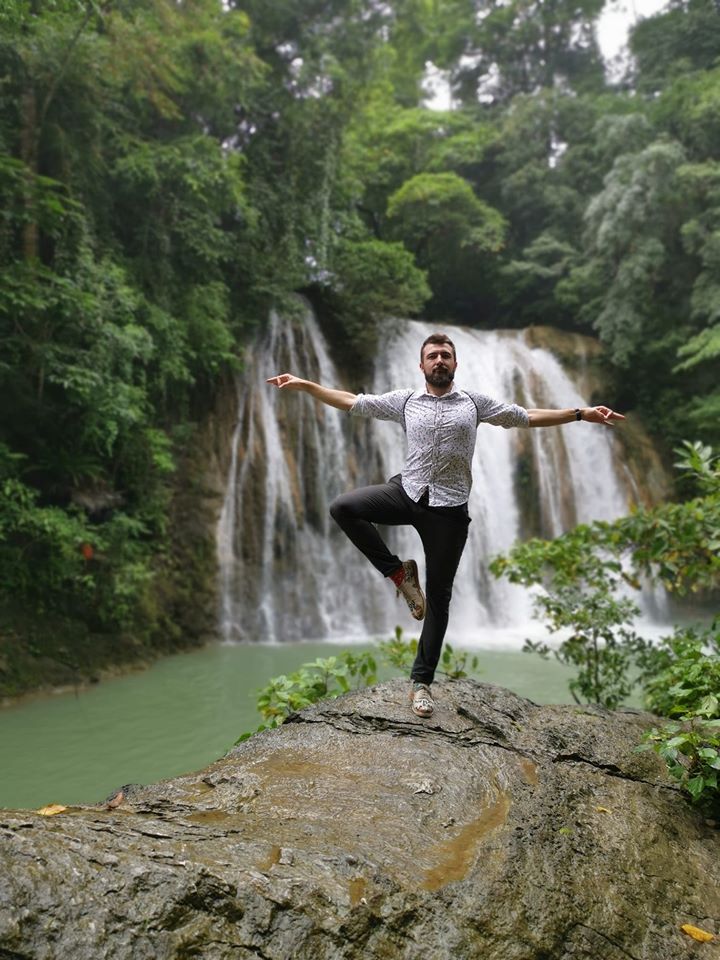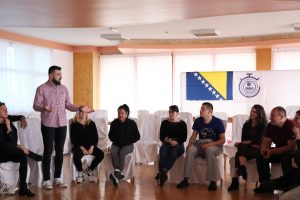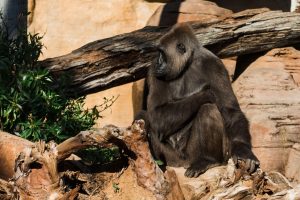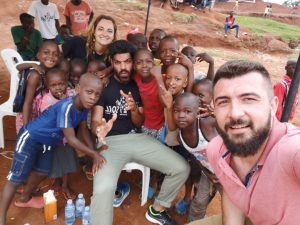- ENGLESKI je oficijalni jezik u Ugandi, ali sva plemena imaju i svoj jezik
- Saobračaj se odvija kao u Engleskoj i Japanu, odnosno vozi se lijevom stranom
- Gorila je najpopularnija životinja i zaštitni znak ove zemlje
- Imaju oko 12% svjetske populacije ptica
- Uganda ima 56 različitih plemena
- Uganda je jedna od najkorumpiranijih zemalja svijeta
- Zemlja sa 43 miliona stanovnika
- Kampala kao glavni grad ima samo 1,5 miliona stanovnika, što bi značilo da većina stanovnika i dalje živi u plemenima izolovani od civilizacije.
- Motori (BODA BODA) su glavno prevozno sredstvo
- Da sve ne bude tako lijepo brinu se kojekakvi kukavci, a posebno komarci
- Uganda je zemlja sa velikim procentom ljudi zaraženih malarijom
- Redukcije struje i vode ovdje su svakodnevnica. Struja se koristi gotovo isključivo za rasvjetu (jedna sijalica), a kad ima struje onda često pada napon.
- Mnoge porodice žive u sklepanim limenim ili drvenim šupama veličine 2×2 metra
- Prosječna plata je oko 200€
- U Kampali kažu da su pješaci brži od autobusa
- Zbog velikog problema krčenja šuma donesen je zakon da za svako osječeno drvo treba posaditi nova tri
- Uganda je druga najgušće naseljena zemlja nakon Etiopije
- Uganda ima 6,8% svjetskih vrsta leptira
- Iako je Engleski oficijalni jezik, u Ugandi se priča preko 30 domorodačkih jezika
- U Ugandi „ROLEX“ se koristi kao izraz za „omlet“ umotan u „CHAPATTI“
- Chapatti je vrsta tortilje
Author: ismail-sehic-blogg
Uganda – First, real, Muzungu experience
Pripreme za odlazak u Ugandu su bile sve osim uobičajne. Nažalost, ponukan predrasudama i stereotipima o ovoj Afričkoj zemlji pripreme su krenule puno ranije od uobičajnih i mnogo detaljnije nego inače. Uobičajna pripreme izgleda nekako ovako: „Unlock a phone, check a weather in the country I going in and pack my luggage“! Ništa posebno i ništa detaljno se ne istražuje, bar ne u mom slučaju. Ovaj put, istraživanje je odrađeno detaljno, od samog života u Africi, temperature, vremena, zaraza, bolesti u Ugandi, zemljama kojim je okružena i svim ovim detaljima za iste te zemlje. Nakon toga je uslijedila vakcinacija, pripremanje kojekakvih tableta i sprejeva kako bi se „zaštitio“ od „nepoznatog“ i slično, ali eto kad čovjek ide u nepoznato, valjda se treba i pripremiti. O zanimljivostima i nekim činjenicama o Ugandi pogledajte u mojoj sekciji „zanimljivosti“…Pripreme za odlazak u Ugandu su bile sve osim uobičajne. Nažalost, ponukan predrasudama i stereotipima o ovoj Afričkoj zemlji pripreme su krenule puno ranije od uobičajnih i mnogo detaljnije nego inače. Uobičajna pripreme izgleda nekako ovako: „Unlock a phone, check a weather in the country I going in and pack my luggage“! Ništa posebno i ništa detaljno se ne istražuje, bar ne u mom slučaju. Ovaj put, istraživanje je odrađeno detaljno, od samog života u Africi, temperature, vremena, zaraza, bolesti u Ugandi, zemljama kojim je okružena i svim ovim detaljima za iste te zemlje. Nakon toga je uslijedila vakcinacija, pripremanje kojekakvih tableta i sprejeva kako bi se „zaštitio“ od „nepoznatog“ i slično, ali eto kad čovjek ide u nepoznato, valjda se treba i pripremiti.
Naravno, prije svega gore navedenog morao sam provjeriti „gdje i kako se vadi VIZA za Ugandu“?! Nažalost, mi kao Bosanci i Hercegovci uvijek imamo problem oko viza i putovanja do destinacija, ali ko je spreman putovati, spreman je svašta nešto uraditi da bi otputovao. Ovaj put sam imao sreće, jer se viza za Ugandu vadi online putem, i cjeli proces traje 2 puta po 10 minuta. Nakon što unesete sve podatke i „submitujete“ aplikaciju, nekoliko dana/sedmica poslije pošalju vam mail i traže da učitate pozivno pismo, potvrdu o smiještaju i karte. Zbog toga rekoh 2×10 min.
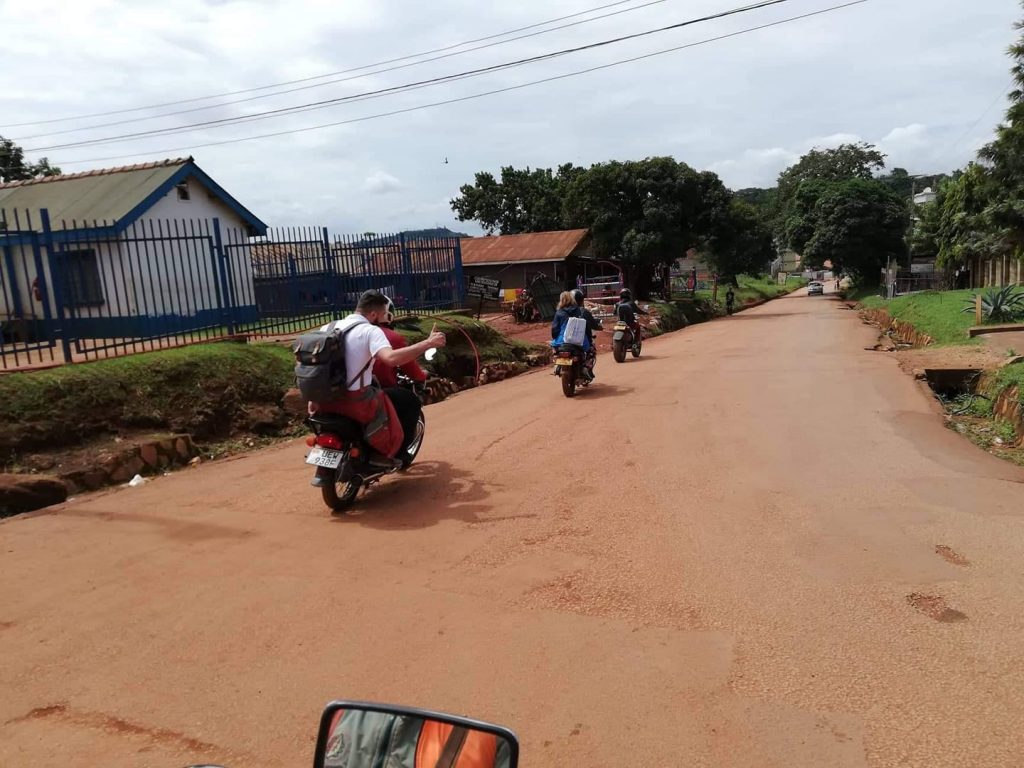
Pošto baš i nemamo Bog zna kakvih konekcija za putovanja avionom ovako je izgledao moj put:
Sarajevo – Istanbul – Rome (Turkish Airlines) – Addis Ababa – Entebbe (Ethiopian airlines) – Kampala (auto) i istim takvim putem nazad.
Po samom izlasku sa Entebbe aerodroma dočekala me je jako velika vlažnost zraka i nekakva čudna temperatura. Nisam bio svjestan da li je pretoplo ili „zagušljivo“, ali bilo je jako neugodno. Kada sam stigao u Kampalu, odnosno u „Green House“ (kuća/hostel) u kojem sam bio smješten, u sobi gdje sam trebao spavati primjetio sam krevet sa „mrežom“, istom onom koju roditelji stavljaju na dječije krevetiće da ih zaštite od kojekakvih „baja“. U tom trenutku sam se osjetio totalno ugrožen, jer „ne bi ta mreža bila tu da to stvarno nije ozbiljno HAHA“! Nakon toga, bio sam spreman da pri svakom izlasku prionem na „prskanje“ svim mogućim „anti…“ sprejevima. Naravno, to se desilo samo prvi dan dok nisam shvatio da to i nije toliko strašno, pa sam ostalih dana sprejeve koristio samo kao preventivnu zaštitu u totalno normalnoj mjeri.
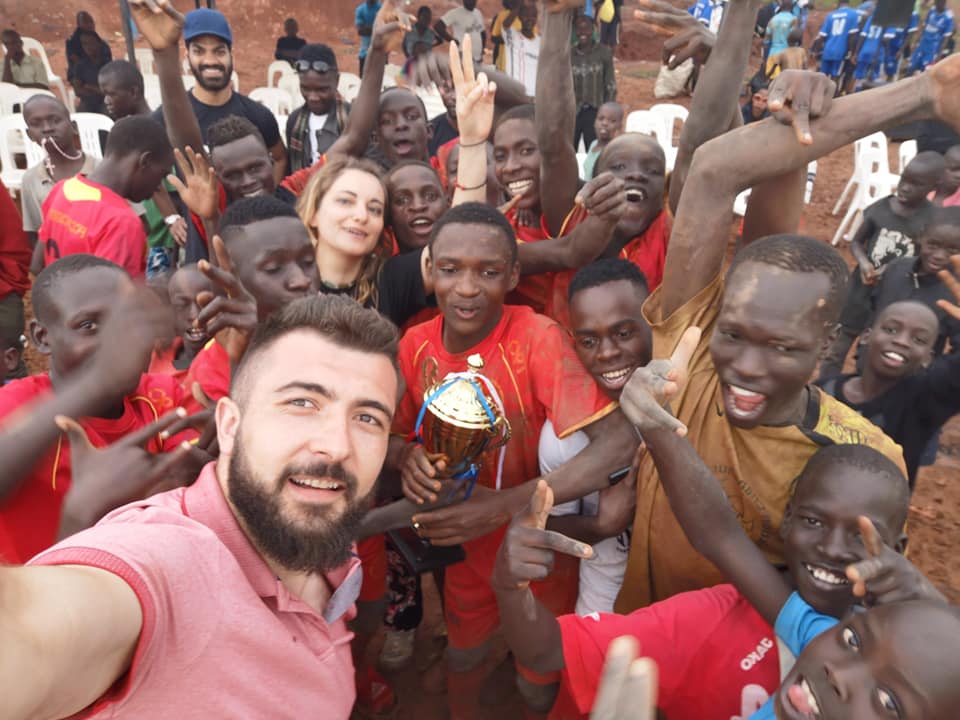
U svom boravku u Kampali imao sam priliku posjetiti jako mnogo različitih mjesta i plemena, gdje sam upoznao veliki broj različitih, a istih ljudi, imao sam priliku osjetiti život „centra Kampale“, ali i plemena do kojih se putuje i po par sati. Svaki odlazak u grad je bio poseban, jer je bilo nemoguće korisitit normalan „taxi ili uber“, već smo koristili „boda boda uber/taxi“ koji je mnogo praktičniji i jednostavniji za putovanje po gradu. BODA BODA su motori koji se koriste kao uber i taxi u Ugandi i to je najviše korišteno prevozno sredstvo u ovom djelu kontinenta. Ova vrste prevoza se najviše koristi zbog jako velikih gužvi u saobračaju, te jako loših puteva, gdje možete naići i na rupe veličine automobila i dubine preko pola metra. Prema lokalcima rupe su nastale i nastaju zbog jako lošeg kvaliteta puta kojeg su gradili kinezi, te velike vlage koja kroz taj materijal lako prodire i pravi uvale. Bogataši se naravno voze velikim džipovima i „lete“ preko rupa, dok obični smrtnici koji su nekako kupili po neki japanski automobil prelaze preko rupa i po par minuta.
Više o važnim faktorima i zanimljivostima pogledajte u rubrici „zanimljivosti“, a da nastavljam svoju priču…
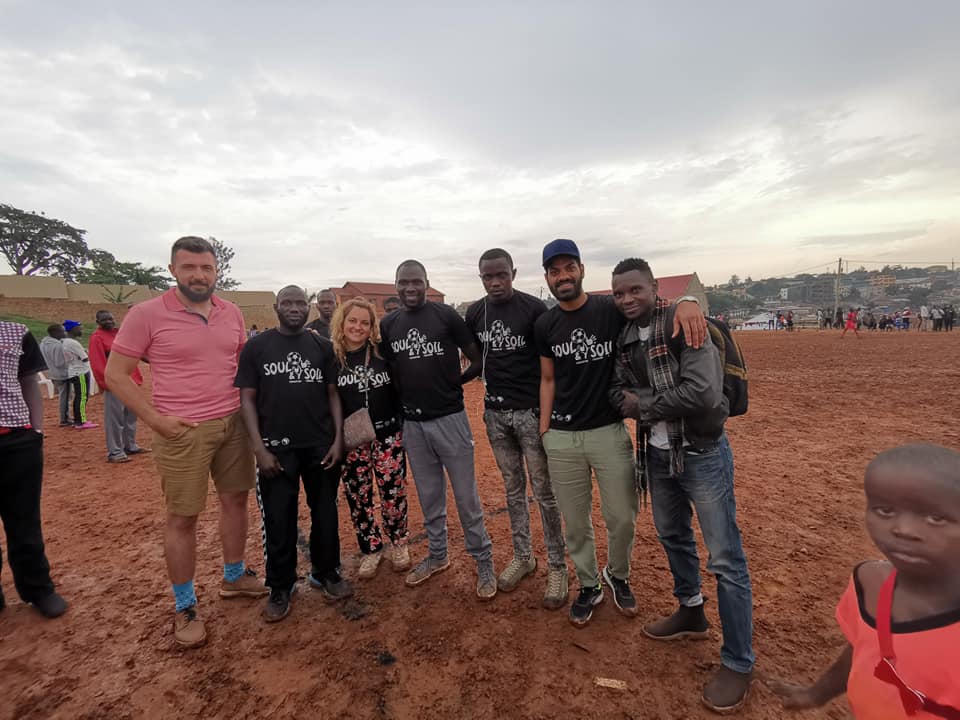
Gdje god sam se pojavio sa svojom ekipom „bjelaca/Evropljana“ dočekani smo dječijim uzvicima „MUZUNGU“, što bi ti ga značilo „BJELI LJUDI“. Naravno, mi to nismo shvačali kao rasizam, već smo se uvijek nasmijali i prišli toj djeci koja su te riječi izgovarali jako nasmijani i „iznenađeni“. Pri prilasku, djeca su prije svega bježala ili se odmicala, pa su tek naknadno prilazili i pozdravljali se sa nama. Jako je teško bilo napraviti sliku sa samo jednim djetom, jer su svi uvijek uskakali i željeli se slikati sa nama. Imao sam priliku obići nekoliko plemena, a jedno mi se posebno dojmilo „Lugala Sugu” o kojem sam pisao i na Facebooku, pa da se ne bih ponavljao prenosim post u cjelosti:
Danas sam bio u posjeti jednom selu pod imenom Lugala Sugu do kojeg se može doći samo čamcem, takozvanim kanuom preko jezera Viktorija (ime nastalo kolonizacijom Ugande).
Posjetili smo nekoliko porodica, koje su nas zamolile da ih ne slikamo, jer im je neprijatno, a neki nisu dopustili iz straha. Naravno, jedan nas “domaćin” nam je to dozvolio, objasnio sta se dešava u tom selu, kako žive bez struje, kako se “bore” sa vodom i kako je to živjeti odvojeno od civilizacije. Predstavio nam je njihovo voće, koje većinom i on sadi u svojoj bašti, objasnio koje životinje se nalaze u šumama okolo i kakva sve plemena postoje.
Nakon toga smo posjetili jednu školu, koja je nastala kao jedna ideja/projekat da se djeci koja su udaljena od “prave škole” ponudi osnovno obrazovanje. Malo smo se družili sa djecom koja su nam neprestano mahala, trčala u zagrljaj i onako iskreno nas nazivala MUZUNGU (bijeli ljudi).
Nakon toga vratili smo se u “civilizaciju” gdje smo obišli određene građevine i pričali sa lokalcima o kvalitetu života, poslu i slično.
Popodne smo otišli u Design HUB koji okuplja ljude svih boja, rasa, vjera itd. gdje smo obavili finalne pripreme za sutrašnji dan.
Ako niste znali oficijalnih jezik u Ugandi je Engleski, tako da nam je jako lako razumjeti lokalce, ako ste se do sad pitali ko nam sve to prevodi. Naravno, imaju i svoj lokalni, te svako pleme ima svoj “zasebni” jezik.
Čak sam uspio i da naučim par riječi:
Vebalenjo – hvala
KARE = OK
BODA BODA – taxi
MZUNGU – bijeli ljudiUskoro donosim još informacija i detalja iz ovog kraja svijeta….
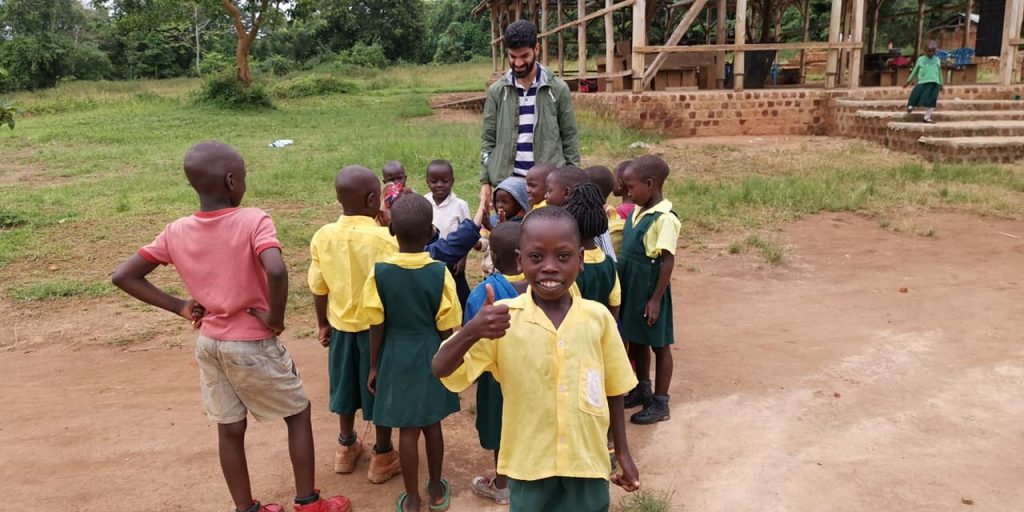
Bili u civilizaciji ili van nje, bili u plemenu ili u HUB-u dočekat će vas osmjesi i dragi pogledi, na njihovim licima jako teško je primjetiti tugu i žalost, već sve suprotno tome. Svi su spremni pomoći, svi žele dati svoj doprinost da se u ovoj siromašnoj zemlji osječate sretni i zadovoljni, svi žele pokazati gostoprimstvo i svoju sreću. Što se tiće mene, oni su to i uspjeli, sve ovo su prenijeli na mene i pomogli su mi da razumijem njihovu kulturu i državu puno bolje nego sam to znao prije.
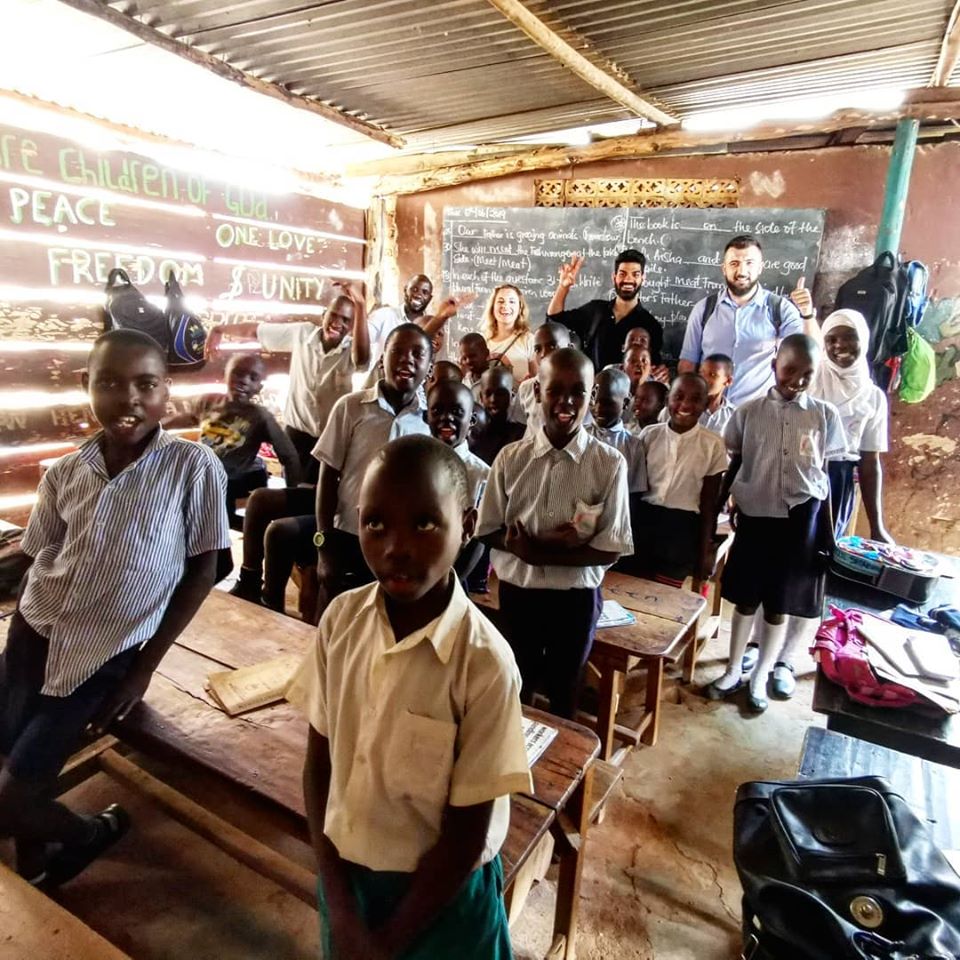
Boraveći u Kampali imali smo priliku posjetiti i nekoliko škola i edukativnih centara, koji naravno liče na sve osim na školu, ali bitno je da se ljudi obrazuju i edukuju. Pored svega što smo uradili u Kampali, mi smo izrazito došli sa projektom kako bi povezali razna plemena koja i nisu u tako dobrim odnosima kroz sport, pa smo tako uspjeli organizovati i turnir u fudbalu. O tome sam takođe pisao na Facebooku, pa ponovo prenosim post u cjelosti:
Današnji dan u Ugandi sam ponovo posvetio djeci i omladini koja dolaze sa ruralnih područja ovog grada, sela i mladih ljudi koji su u teškom finansijskom i socijalnom stanju.
Kako bi održali jednu jako korisnu edukaciju i skupili mlade ljude, tinejdžere i djecu iz tih područja i plemena, koji danonoćno rade kojekakve poslove kako bi preživjeli morali smo naći pravi način i napraviti sistem.
Kako biva u većini slučajeva, gdje god se pojavi mržnja i netrpeljivost, sport i sportske aktivnosti dođu, to pobjede i razbiju sve predrasude. Mi smo se vodili tom logikom i za samo nekoliko dana u suradnji sa #PCCP-om i #SoulXpressions-om, u koordinaciji #MineVagantiNGO, koji je i začetnik cijele ove priče napravili smo veliku stvar. Uspjeli smo organizovati turnir u fudbalu, okupiti razne “mahale” i plemena, organizovati ljude, pripremiti nagrade i obradovati kako mnogu djecu, tako i njihove roditelje i plemena.
U organizaciju su se uključili svi, ali bukvalno svi. Roditelji su donosili “UGALJ” i zajedno sa omladinom ocrtavali teren, pa eto ako niste znali oni tako markiranu linije. Našli su ozvučenje, skupili stolice i šatore, stavili mreže na golove, donijeli klupe, sportski klubovi su dali dresove, mi podijelili majice i turnir je bio spreman za jako kratko vrijeme.
Utakmice su krenule po suhom i prasnjavom terenu koji uopće nije prijatan, ali nakon nekoliko utakmica počela je kiša, koja je od prašine napravila blato, koje je izgledalo katastrofalno. Sve ovo, a moglo bi se dodati još stvari koliko želite nije zaustavilo ove omladince da prestanu igrati jedne sekunde. Na kraju jedna “mahala” je dobila svog pobjednika, ali su se svi radovali, jer su i oni svjesni da su svi pobjednici.
Kao što možete vidjeti na slikama ispod, fudbalski teren je bio ispunjen djecom koja su se borila ko ce donijeti loptu, roditelja i prijatelja koji su bodrili mladice koji su se u bladu do grla borili za pehar i ostale nagrade. Naravno, bit svega je bio okupiti ih i svima na jednom mjestu održati jednu korisnu edukaciju. PROJEKAT je nazvan “#SOULandSOIL” – EDUKACIJA KROZ SPORT, a turnir #Kikubamutwe.
Nakon toga posjetili smo i jednu školu plesa koja okuplja djecu i mlade iz socijalno ugroženih područja, siromašnu djecu i mlade iz raznih plemena.
Nakon druženja napravili su jedan jako lijep performans za nas i pokazali svoje vještine plesanja.
Ja smatram da smo uspjeli i da su MZUNGI ovaj put uradili nesto korisno za njihovu zajednicu i povezali lokalne zajednice i plemena. Mi smo zaboravili i na hranu i piće, pa smo doručkovali tek nekad u vrijeme večere, ali gledajući svu tu strast i želju, kao i okruženje u kojem smo bili, nisamo uopće osjetili potrebu za tim.
Život je ovdje sigurno težak, ali je pun ljubavi i sreće, tako da ne gledajte koliko imate, nego koliko dajete.
Šaljem vam ljubav iz ovog drugog svijeta, čudne ali i prelijepe Ugande.
#EducationThroughSport #InternationalCooperation #OneWorld #minevagantingo #mvinternational #SoulXpressions #PCCP #BRAVO #BRAVOBIH #BRAVOSARAJEVO
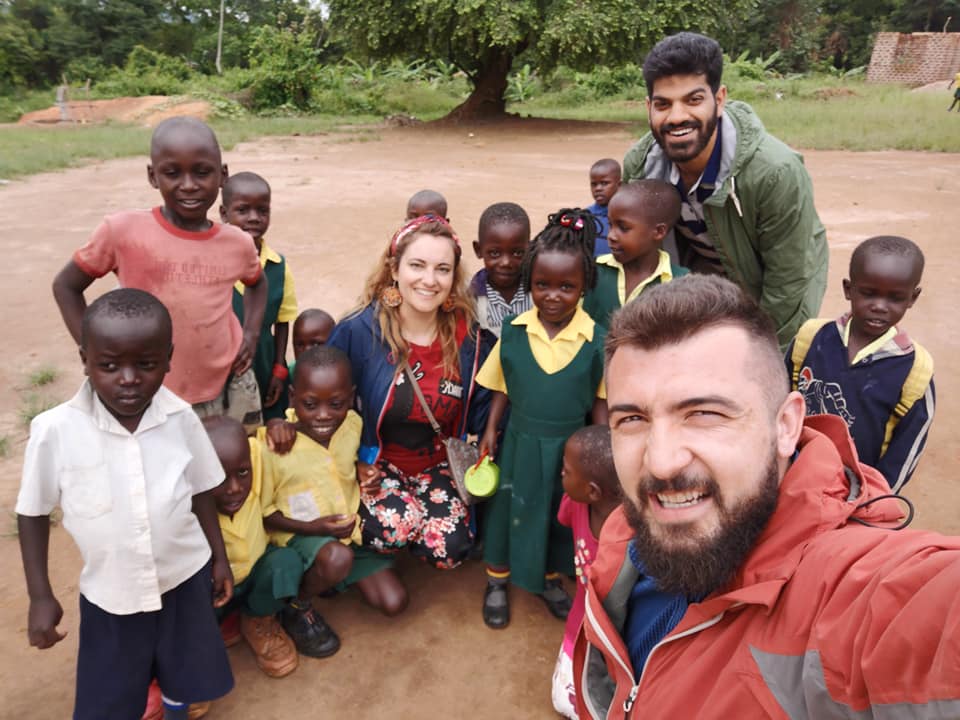
Iako je uganda jedna od najsiromašnijih zemalja svijeta, iako sve to vrlo lako možete vidjeti prolazeći ulicama van centra, to se nikako ne može primjetiti na ljudima, jer svaki susret sa njima počinje i završava sa smijehom, počinje sa lijepim riječima i završava sa plesom itd. Moram priznati da siromaštvo vlada ovom zemljom, ali ono materijalno, ono duhovno sigurno ne i siguran sam da i mi našu sreću trebamo tražiti u nećemo trećem, jer i oni sigurno od nekud crpe svoju energiju i želju za životom.

Priču iz Ugande želim završiti sa jendom od posljenjih rečenica iz mog posta: „Život je ovdje sigurno težak, ali je pun ljubavi i sreće, tako da ne gledajte koliko imate, nego koliko dajete.“
Kada kažem dajete, onda stvarno tako i mislim, jer vjerujte da i malim davanjem nekog možete jako mnogo usrećiti, nekada to vama znaći jako malo, a nekom i previše. Ako niste putovali u takve zemlje i osjetili kako to izgleda, siguran sam da nećete do kraja shvatiti šta to tačno znači.
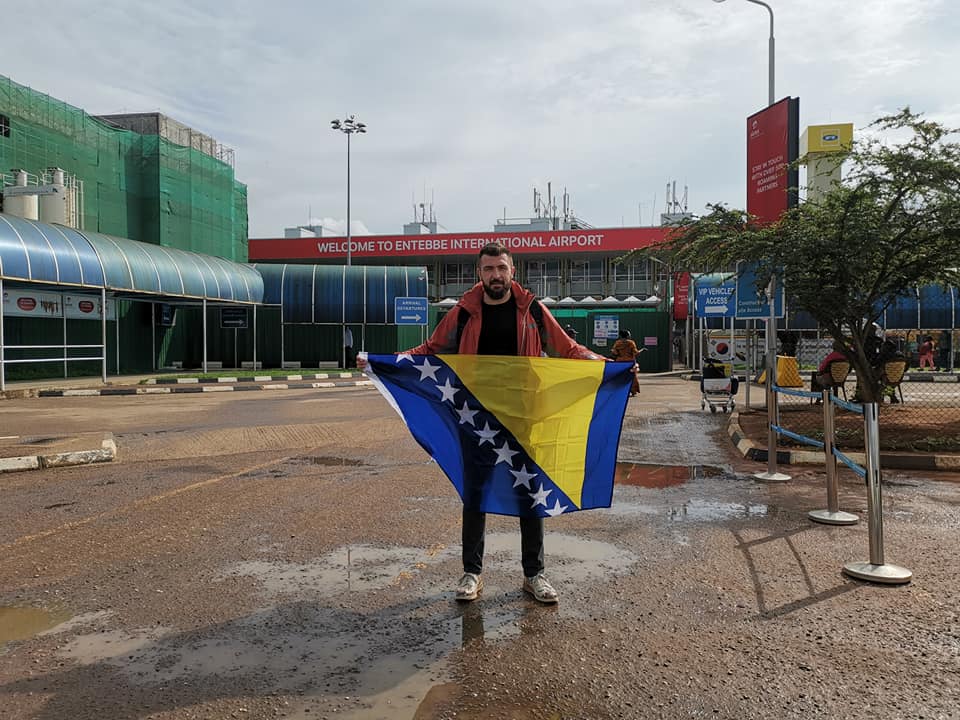
Žao mi je što Bosanci često ružno govore o svojoj zemlji i kao da se takmičimo ko će više oblatiti život u Bosnia i Hercegovini, ali kada vidite šta je stvarno siromašna zemlja, onda je lako shvatiti da Bosna i Hercegovina možda i nije među najbogatijima na svijetu, ali nije ni među onim najsiromašnijim.
O zanimljivostima i nekim faktima o Ugandi pogledajte u mojoj sekciji „zanimljivosti“…
Ankara
Anitkabir
is the mausoleum of Mustafa Kemal Atatürk, the leader of the Turkish
War of Independenceand the founder and first President of the
Republic of Turkey.
The mausoleum looks a lot like the
Parthenon in Athens, with tall columns at its entrance. As the video
illustrates, there were moments when horns blasted over the speakers
and all of the visitors stopped to pay tribute to the Father of
Turkey.
The site is also the final resting place of İsmet
İnönü, the second President of Turkey, who was interred there
after he died in 1973. His tomb faces the Atatürk Mausoleum, on the
opposite side of the Ceremonial Ground.
It’s hard to not
be impressed by this extravagant memorial. On the 69th anniversary of
his death, over milion people visited the mausoleum to pay respect to
the Father of Modern Turkey.
Think about that for a
moment!
Istanbul
Beylerbeyi Palace
Beylerbeyi Palace on the Bosphorus Beylerbeyi Palace, summer residence of the sultans, is located at Beylerbeyi neighborhood on the Asian shore of the Bosphorus. It was ordered by the sultan Abdulaziz and built between 1861-1865 by head architects Sarkis Balyan and Agop Balyan, imperial architects of Armenian origins, in French neo-baroque style with a traditional Ottoman house plan. Important foreign guests visiting the Ottoman Empire were accommodated in this palace during the summer months; Prince of Serbia, King Nicholas of Montenegro, Emperor Joseph of Austro-Hungary, Shah Nasireddin of Iran, Prince Oscar of Sweden, and Empress Eugenie of France were some of them. Sultan Abdulhamid II spent the last 6 years of his life and died here in 1918, meanwhile other sultans ruled in the Dolmabahce Palace during winter months and came here only for the summer for a nice climate.
The palace has a rectangular plan with the long side facing the Bosphorus. There are 6 large halls and 24 rooms on two floors raised on a service basement which was originally used as a kitchen and storage. The palace is divided into mens’ section (Selamlik) and womans’ section (Harem) having separate entrances for both. The Selamlik was used for State functions therefore was very ornate, meanwhile the Harem was reserved only to the ladies and with a simple decoration.
Berlin
Brandenburg Gate is the first stop for every visitor to Berlin! The city’s iconic landmark offers fascinating insights into the city’s history.
The Brandenburg Gate is one of the most iconic sights in today’s vibrant Berlin. More than just Berlin’s only surviving historical city gate, this site came to symbolise Berlin’s Cold War division into East and West – and, since the fall of the Wall, a reunified Germany. Architecturally, the sandstone Brandenburg Gate also represents one of the earliest and most attractive examples of a neo-classical building in Germany.
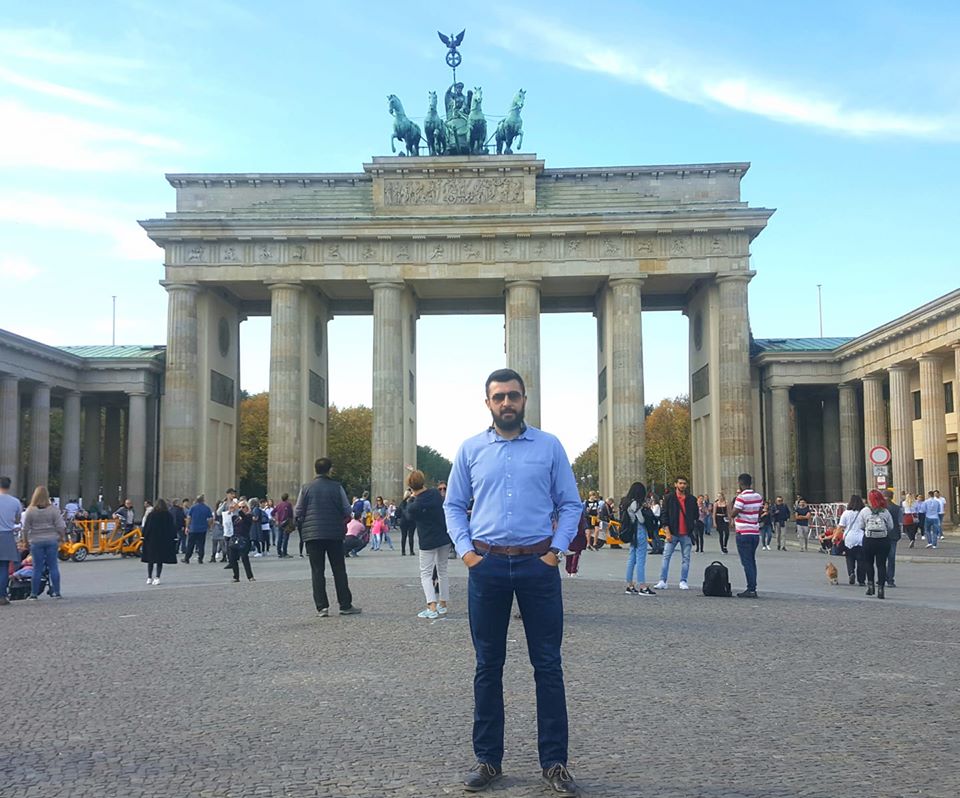
History – the Brandenburg Gate
Constructed between 1788 and 1791, the Brandenburg Gate was Berlin’s first Greek revival building. Designed by Carl Gotthard Langhans, architect to the Prussian court, it was inspired by the monumental gateway at the entrance to the Acropolis in Athens. The Brandenburg Gate is 26 metres high, 65.5 metres long and 11 metres deep, and supported by two rows of six Doric columns.
In 1793, the gate was crowned by the Quadriga statue, designed by Johann Gottfried Schadow. This statue also has its own story to tell. In 1806, when Napoleon’s army took Berlin, the French Emperor had the Quadriga transported to Paris as war booty and a sign of his victory. In 1814, after Napoleon’s forced abdication, the Quadriga was returned to Berlin where it once again adorned the Brandenburg Gate, facing towards the east and the city centre.
In 1946, with the post-war division of Germany and Berlin, the Brandenburg Gate was in the Soviet sector. When the Berlin Wall went up in 1961, the Gate stood in an exclusion zone in an arc of the Wall, inaccessible for locals and visitors alike. When the Wall fell, 100,000 people gathered here for the Brandenburg Gate’s official opening on 22 December 1989 – and soon afterwards, crowds thronged the area to celebrate their first joint New Year’s Eve in this once-divided city. Today, more than almost any other of the city’s landmark sights, the Brandenburg Gate symbolises a reunited Berlin.
Sassari
One
of the most important cities in the north of Sardinia. Sassari is
well represented by its historical center, where you can admire
buildings in different artistic styles: neoclassical, baroque,
gothic, romantic.
Sassari
is a beautiful and regal city. It’s a place you do not expect to
find, with a thousand extraordinary surprises. As soon as you begin
to walk in the city center you discover
one of the most beautiful corners of Sardinia. You will fall in love
with its history, monuments, green spaces, culture, tradition and for
its cuisine that make it a unique destination to discover.
A
controversial history made up of judicatures and maritime republics,
realms, pirate invasions, great characters of both ancient and modern
history of which the city can be proud.
It
all started in 1131, when it appears in the Condaghe (stories) of San
Pietro in Silki the name of Jordi de Sassaro.
It
became a free city in 1236, promulgating under the domination of
Pisans the Statutes of Sassari, a code that regulated the civil,
legal and economic life of the citizens . This important document is
written in Latin and Logudorese Sardinian.
There
are only five copies of this manuscript, two of which date back to
the foundation of the city. It was in this period that the city,
disputed between the maritime republics, stipulated an act of
confederation with the Republic of Genoa in 1294, and completed the
walls for protection.
The
Royal City of the Kingdom of Sardinia from 1331, still retains the
traces of the passage of Aragon and the Spanish. The castle of
Sassari, _ the seat of the Spanish Inquisition in Sardinia was
demolished in 1877 and now only a few parts remain that still tell a
piece of history of the bourgeoisie and of the Aragon presence: the
foundations, and two corridors of the old wall that housed the
artillery. After being invaded by the French in 1527, Sassari faced
several periods of severe social and economic crisis, and was
decimated by the plague in 1582. With the Treaty of Utrecht in 1713,
it began a brief period of Austrian domination, then the Savoy took
their place in 1720. Everything else is part of its cultural
renaissance and urban development until the nineteenth century.
The
city expanded beyond the walls, partially torn down during a cholera
epidemic. Following the example of the capital city, Turin, new
districts arose with a new hospital, prison, schools and town
squares, and a new Civic Theater. Nearby Porto Torres was restored
with the first ferry connections with Genoa and new entrepreneurship
grew: it became the second most important city in Italy for the
production of leather.
But
there is more to Sassari than just its history: it is a city with at
least twelve reasons for being so special …
…
This is the city where the first university of Sardinia was born and
still is the city of the young who can follow studies of excellence
in law, agriculture and veterinary medicine.
…
Its the city whose symbol is a fountain that is a true masterpiece:
the Fountain of Rosello, previously famous as the major well of the
area since 1295
…
Its the city where the city gathering spot is a large
nineteenth-century square, Piazza Italia, where the Palace of the
Province and the neo-Gothic Palazzo Giordano overlook the city
center
…
Its the city where enormous Candlesticks, recognized by the UNESCO
World Heritage Site, on August 14 are carried on the shoulders of the
devout in a magic dance through the narrow and crowded streets of the
city to the Cathedral of the city
…
Is a city full of beautiful historical buildings built between the
seventeenth and nineteenth centuries that host municipal offices and
museums
…
Its the city of politics and where presidents of the Italian Republic
were born and raised. Here Enrico Berlinguer, Antonio Segni and
Francesco Cossiga were born
…
Its the city where you will find the command of the Brigata Sassari,
whose origins date back to the First World War, when the Sardinians
distinguished themselves in fierce fighting on the front that earned
them numerous awards and citations for the first time in the Bulletin
of the Supreme Command. Written for Sardinians, the hymn Dimonios
(devils) commemorates the valor and courage typical of the
islanders
…
Its the city with the best fast food: the fainè
…
Its the city that has a special prenuragic monument, Mount Accoddi,
unique in all the Mediterranean with a pyramidal structure with steps
similar to the ziggurat of Mesopotamia
…
Its the city in whose territory is located the only natural lake in
Sardinia: Lake Baratz
…
Its the city in whose territory you can find the atmosphere of the
Scottish highlands in the Argentiera
…
Its the city in whose territory it is possible to see the Asinara
Gulf with the crystal-clear sea of Sardinia and pink flamingos.
The
most important monumental buildings are: the St. Nicholas Church,
Palazzo Ducale, Palazzo Giordano, Piazza Italia and the Rosello
Fountain. The St. Nicholas Church dominates the old town with its
impressive, baroque façade containing the statues of martyrs in
niches. There is a bell-tower beside the church. Its interior dates
back to the XIII Century and is in the gothic style. Its external
part was constructed in the XVII Century. Among the numerous works of
art, there are also: a marble altar from the middle of the XIX
Century, a Madonna del Bosco painting from the XIV Century, a Spanish
crucifix from the XVIII Century and the mausoleum of Placido
Benedetto di Savoia – Lord of Moriana, brother of Vittorio Emmanuele
I and Carlo Felice, who died in Sassari in 1802.
Palazzo
Ducale was built at the end of the XVIII and beginning of the XIX
Centuries by Antonio Manca, the marquise of Mores and duke of
Asinara, most likely according to Carlo Valino’s project. In 1900,
the palace was purchased by the municipal administration and nowadays
hosts the small town hall.
Palazzo
Giordano was constructed in 1878 and is actually the headquarters of
the Banco di Napoli. The beautiful rooms were decorated by Gugliemo
Bilancioni.
Piazza
d’Italia, constructed in 1872, spreads over 1 hectare and is also
called “Sassari’s lounge (“il salotto di Sassari”) as
it used to be an urban centre where new quarters were developed.
There is the Province’s Palace (il Palazzo della Provincia),
constructed between 1873 and 1880 and the statue of Vittorio Emanuele
II – the work of artist Giuseppe Sartorio (1899).
The
Rosello Fountain was constructed by craftsmen in the XVII Century in
a time when there was no aqueduct in the most important point of the
city. Considering the abundance of water, a wash-house was built
beside it. Nowadays, the area is less important and in a valley
overlooked by the Rosello Bridge. The fountain is covered with
marble, its walls are decorated with 12 lions with water flowing from
their mouths. Metaphoric statues of the 4 seasons are in each corner
and a statue of St. Gavino on horseback rests on the peak of 2
intertwined arches.
There
are very nice churches in the old town – especially St. Mary’s church
where “candarieri” are kept (big, wooden machines that are
carried during the procession by the historic neighbourhoods’
representatives, the 14th of August every year during the “festa
manna”). Another church that is worth a visit is the beautiful
cathedral of St. Nicholas recently opened to visitors after a long
period of restoration.
Tanay
Staying
on this rock I was trying to balance inspired by this place and
people living here.
Balance…?
Are you
familiar with that? Do you know what is it? To make it even more
complicated, what about “Rock Balancing”? Have you heard about
it? Sounds interesting right? Maybe you’ve tried balancing
different stuffs but balancing a heavy and with various sizes and
forms rocks, well it’s an extraordinary skills. The art of rock
balancing is not an easy-breezy thing to perform considering that
rocks are the most irregularly-shaped pieces on earth
In
Tanay Rizal, just 57 kilometers east of Manila, 1 hour and 30
minutes’ drive, Rock balancing exists and it’s a popular.
As
per Wiki: Rock balancing is an art, discipline, or hobby (depending
upon the intent of the practitioner) in which rocks are balanced on
top of one another in various positions. There are no tricks involved
to aid in the balancing, such as adhesives, wires, supports, or
rings.
In the Philippines, Rock Balancing was founded in
September 2010. There were two proponents who popularized, organized
and introduced this form of Art in Tanay, named Leandro Tamayo
Inocencio and Ildefonso Bandoma Vista. These two names are advocates
for greener and cleaner environment. The very reason why they
introduced this art is not only performing or exhibiting it, yet to
persuade the locals to support their project named “The Journey for
The Trees” This Project tends to give awareness and promoting
environmental awareness and life conservation through conducting such
exhibition of Rock Balancing.
It was a success, a tree
planting activities, lectures for environmental awareness, rock
balancing and more in connivance with Municipality of Tanay, The
Billion Tree Campaign, United Nations Environmental Program (UNEP),
), and the 350.org‘s
10-10-10 Global Work Party, and innumerable sponsors and
volunteers.
“Masaya ang Rock Balancing at sobrang
amdaming tao talaga ang nagpupunta dito sa Tanay(The Rock Balancing
event is very festive and lots of visitors are witnessing it)” the
police in Daranak Falls said. The Event is annually conducted in
Tanay Town Proper from then, but some of the masterpieces are
available right in Daranak Falls. “It’s originally from US, and
they brought it here” he added.
Truly, witnessing the
masterpieces really admired me and motivated me to try. I tried one
but that was really hard, first you have to choose the right shape of
the rocks from the river. You have to balance it according to the
center of the gravity. It really measures your patience and
creativity.
Moreover, experiencing it personally was a
great remembrance. I realized that even a worthless rock can also
turned into a value-laden form of art. An Art that can change the
world to make greener and cleaner, An Art that can increase the
tourism in Tanay Rizal, An art that can teach you how to become
patient.
Taal Volcano
Taal Volcano is the second most active volcano found in the province of Batangas. A complex volcano in the middle of Taal Lake and is often called an island within a lake, that is an island within a lake that is on an island as well as one of the lowest volcano in the world having 311 meters elevation. It offers a very a spectacular view seen from Tagaytay Ridge. Taal volcano is located around 50 kilometers away from Manila, capital of the Philippines.
The main Vulcan point situated in the main crater lake, which is on the volcano island that is in Taal lake, which is in the main island of the Philippines (Luzon).
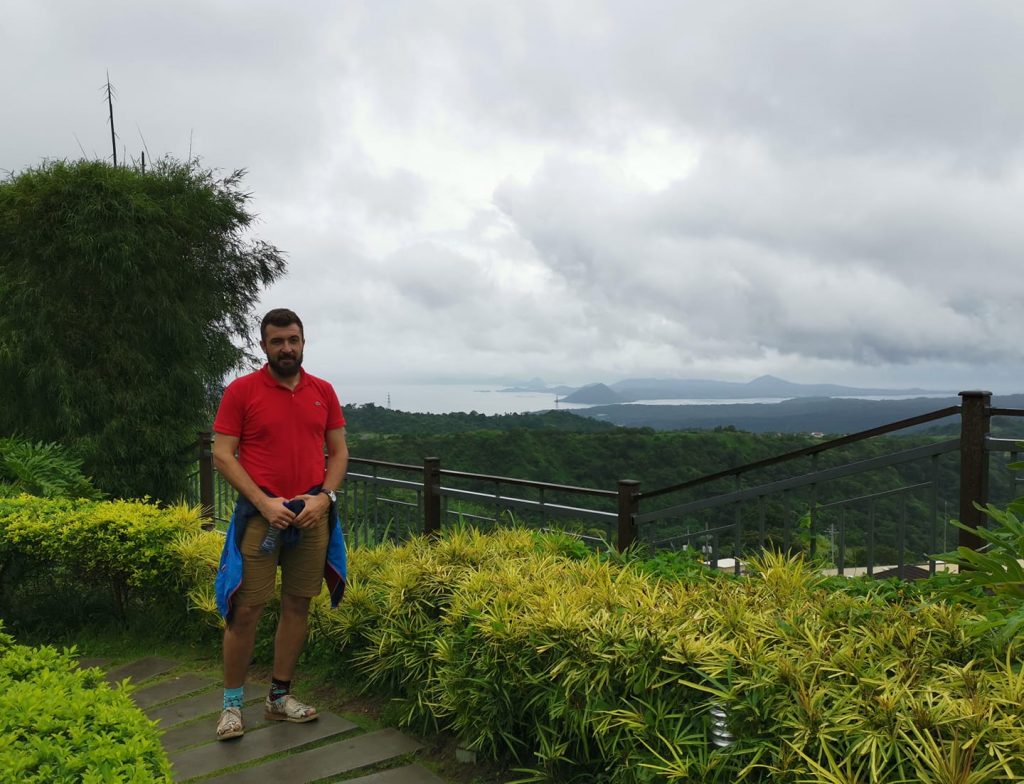
Shown in the above image, almost everyone thought that it is the volcano itself. Looking at the aerial view below, what is being seen by the Tagaytay Ridge is actually the “Binintiang Malaki (Big Leg)” located at the upper part of the image, that was the center of 1707 and 1715 eruption.
Being part of the Pacific Ring if Fire, Taal Volcano has caused loss of lives estimated between 5,000 to 6,000. This is based on the 33 recorded eruption since 1572 to 2011. Taal Volcano was also designated as a decade volcano.
Records also say that volcano eruptions deposited pyroclastic material as far as where Manila, the capital of the Philippines, is.
The volcano island is made of multiple and overlapping cones and craters. Only 47 have been identified which are 26 tuff cones, 5 cinder cones and 4 maars.
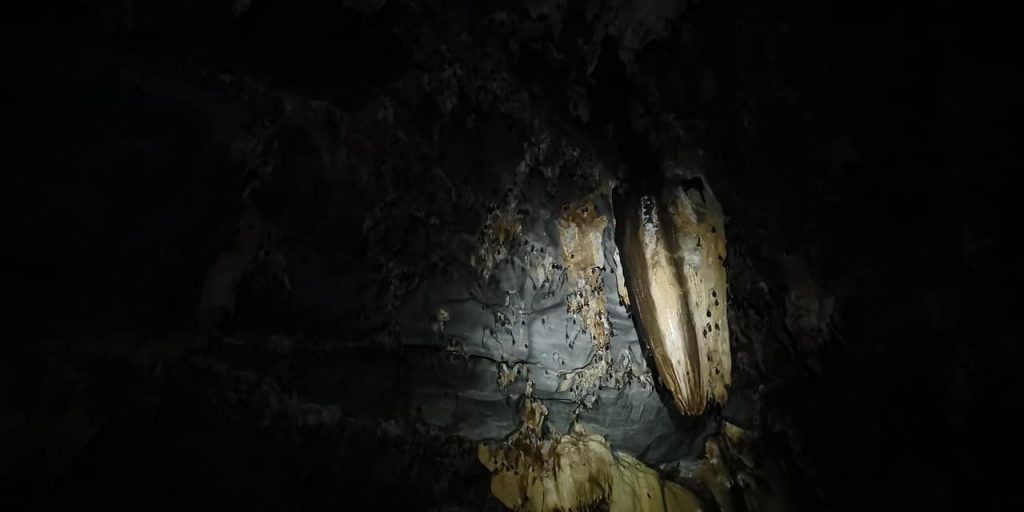
People settled around the volcano even though several warnings have been issued by the Philippine government agency PHILVOCS (Philippine Institute of Volcanology and Seismology). Communities around the island earns their living by farming crops made rich by the volcanic soil and fishing mainly tilapia which is one of the sought after fresh water fish in the Philippine market.
To date, many tourist visit Tagaytay and Batangas to get a good view, ride boats around Taal volcano and climb the slopes of the volcano

